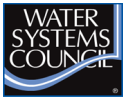This is a SAMPLE FORM with explanation pop ups for each field
| Sample Number: 43866 | Date: 12/07/2002 | Wcode: COMP |
| Customer: Doe, John | Dealer: | ABC Company |
| (555) 555-5555 |
| General Information: | ||
| Number of persons in familyThe number of people in the family determines daily water usage in gallons. We estimate 50 gallons of water used per day for each person in the family and then add 50 gallons to that total to compensate for a dishwasher and laundry machine.ie: # people x 50 gallons + 50 gallons = daily usage 5 people x 50 gallons + 50 gallons = 300 daily usage |
5 | |
| Number of bathrooms in useThe number of bathrooms in your home determines how fast water can be used in gallons per minute (gpm). The gpm demand is important because it determines how fast your water treatment system has to treat the water. We estimate 3.0 gallons per minute demand for each bathroom. The esimate takes into account standard flow restricted plumbing fixtures in bathrooms plus a kitchen faucet.# bathrooms X 3.0 gpm = peak flow rate in gallons per minute 3 bathrooms x 3.0 gpm = 9.0 gpm peak flow rate |
2.5 | |
| Water SupplyThe type of water supply helps us understand the potential water flow and chemistry for your home. A well water supply’s water output is affected by the well recovery rate (gallons produced) the well pump flow rate capability the well tank size and the water pipe diameter and length. A central water supply’s water output is affected by the size of the water pipe diameter and length as well as the water pressure. | ||
| Pump CapacityThe well pump output is measured in gallons per hour or gallons per minute. It’s important to know the well pump output because it determines how fast the water will enter your home. We need to know this information to assure proper sizing of your water treatment system for treatment and cleaning (backwash) flow rates. 450 | Water PressureThe water system pressure affects the amount of water that can pass through your piping system in gallons per minute. The higher the water pressure, the higher the potential water flow through your home piping. 50 | |
| When the water isWhen drawn, is water clear or cloudy Depending on the water chemistry of your water supply, the appearance of the water can change after the water sample was taken. It’s important for us to know the water’s appearance when the sample was taken. Contaminants like iron and manganese can change the water’s appearance after air is introduced to the sample bottle. The water will change from a clear to a cloudy appearance. |
ColorColor, as opposed to turbidity, is due to materials actually dissolved in the water. In most cases, color is due to the presence of organic matter such as tannin or organic iron. No hard, fast rules can be applied to color removal because of the large amount of compounds which may cause the problem. Recommended limit is < 10 color Units. |
|
| Stains: |
| REMARKS: |
| TEST RESULTS | RECOMMENDED LIMITATIONS | |||
|
|
||||
| HardnessHardness in natural water supplies varies from 1 to 2 gpg (grains per gallon) to several hundred gpg in certain sections of the country. Almost everyone is familiar with the problems caused by water hardness, such as the reactions with soap and synthetic detergents and hard water scale. Hardness is most efficiently removed from household water supplies by MP or MBA Series water softeners utilizing the ion exchange process. In this process, the hardness is absorbed by an ion exchange material and a chemically equivalent amount of sodium or potassium is released into the water. When the supply of sodium or potassium in the exchanger is exhausted, it is restored by flushing a strong salt solution through the tank. After the salt and the hardness are rinsed down the drain with fresh water, the softener is ready for another softening cycle. The ion exchanger is not consumed by this process, but can be used over and over again. The recommended limit for hardness is < 4 gpg. Refer to literature sheets on Residential Water Softeners and The MP Mastermind Water Softeners. |
9 | *** | 0-4.00 gpg | |
| PHpH is the measurement of Hydrogen ion activity in the water supply. The pH scale ranges from 0 to 14, 7 being neutral. Any pH below 6.9 has corrosive tendencies and can deteriorate plumbing fixtures. A pH reading above 7.0 is basic and shows no corrosive tendency. pH correction is accomplished with an MBA-AN Series acid neutralizer using calcite and/or NS-mix when dealing with a pH within a 5.7 to 6.9 range. When correcting a pH below 5.6 an 030 chemical feed pump injecting a soda ash solution must be used. Since the hardness of the water increases when using calcite or NS mix, we recommend that a water softener be installed after the acid neutralizer. The NS Series combination units provide both acid neutralizing and water softening in one unit. The recommended limit for pH is 7.0 to 8.5. Refer to literature sheets Automatic Filters, MUN Series, 030 Chemical Feed Pumps and Combination Units. |
7.42 | 7.0-8.5 | ||
| AlkalinityAlkalinity is found in all natural water supplies in the form of bicarbonates, carbonates and/or hydroxides. Low concentrations are not objectionable for normal household use, but excessive concentrations give the water an objectionable “soda” taste and the water may cause undue drying of skin and hair. Alkalinity also reacts with calcium and magnesium to form scale when water is heated. Commercial and Industrial plants use a variety of methods, including demineralization, distillation and treatment with lime, for the removal of alkalinity. However, these processes are not generally applied to household water supplies because of the equipment costs and the technical control required.Recommended limit is 14.62 gpg. |
11.11 | 14.620 gpg | ||
| ChloridesTrace levels of chlorides are found in most water supplies. Chloride is a component of common salt and creates the familiar salty taste. High concentrations of chlorides are synonymous with high total minerals. Such water supplies are usually very corrosive. Chlorides can be reduced for drinking water only by the Puro Series Reverse Osmosis Units. Whole house reverse osmosis units are available but require a significant drain field to accumulate the unit’s wastewater. The recommended limit for chlorides is 14.62 gpg. The unit available to reduce chloride levels is the PURO-35T. See literature sheet. |
4 | 14.620 gpg | ||
| TDSTotal Dissolved Solids are the sum total of all ionized minerals and metals dissolved in water. Ionized minerals and metals are divided into two categories; Cation and Anion. The Cation minerals and metals have positive charges while the Anion minerals and metals have negative charges. The common ionized minerals are alkalinity, chloride, hardness, iron, manganese, potassium, sodium, and sulfate. High TDS water above the 500 ppm range can create severe mineral deposits in the plumbing system and on water using appliance. High TDS water can be reduced with the use of a Puro Series Reverse Osmosis System. Whole house reverse osmosis systems are available, but can require the modification of the existing wastewater system for the home or building. The recommended limit is 500 ppm. |
288 | 500 ppm | ||
| TEST RESULTS | RECOMMENDED LIMITATIONS | ||||
|
|
|||||
| IronIn some respects, iron in a water supply is a worse problem than hardness, because such small amounts cause such severe staining. As little as 0.3 ppm (parts per million) can cause the familiar brown stains on sinks, dishes, fabrics, etc. Most water supplies have iron concentrations in the zero to 10 ppm range, but 20 to 30 ppm is common in some areas. Iron may be present in water in either of two basic forms or, in some cases, a mixture of both. A water supply containing soluble iron (Ferrous Bicarbonate) may be perfectly clear when it is drawn from a household tap, but after the water has been exposed to the air for several minutes, the well-known reddish brown sediment will appear. It is this insoluble form (Ferric Hydroxide) which causes the troublesome stains.MBA Series water softeners are a great tool for removing soluble iron in levels up to 5.0 ppm. When insoluble iron is present, an FES Series combination iron filter and water softener is recommended. The recommended limit for iron content in water is 0.3 ppm. Refer to literature sheets on Residential Water Softeners, MP Mastermind Water Softeners, Automatic Filters, Simplus Systems and NS and FES Combination Units. |
0.2 | 0.300 ppm | |||
| TurbidityTurbidity, or cloudiness in water, is due to very small solid particles which tend to float because of their low weight. In some cases, turbidity is removed with an MBA-MM or MBA-S Series filter containing a fine filtering material. Recommended limit is < 5.0 NTU (Nephelometric Turbidity Units). Refer to Automatic Filters literature sheets. | 2.4 | ntu | |||
| SulphatesTrace levels of sulfates are found in most natural water supplies. Sulfates do not generally contribute to taste unless the amount is extremely high. However, at concentrations above 30 to 40 gpg, magnesium and sodium sulfate are quite laxative to those people not accustomed to the water. Sulfates can be reduced only by the Puro Series Reverse Osmosis Units. The recommended limit for sulfates is 14.62 gpg.The Reverse Osmosis Unit available to reduce chloride levels is the Puro-35T. See Literature sheet. |
0.6 | 14.620 gpg | |||
| Iron AlgaesIron Algae is a bacteria that lives on iron, especially the ferrous iron that can be found in water. The resulting waste, from the bacteria, are ferric hydroxide compounds which can cause clogging and staining of pipes, fixtures, and even laundry. The taste and odor of the water will also be effected. | NONE | None | |||
RECOMMENDATIONS:
MP-MBA-30T – HARDNESS AT 12 GPG
RAM/HH






